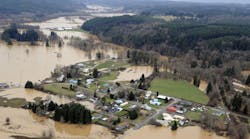Minnesota Adds to Impaired Water Bodies
Extensive testing has revealed that more than 1,400 Minnesota lakes and streams are known to be polluted. The Minnesota Pollution Control Agency (MPCA) plans to add nearly 300 water bodies to its biannually updated impairment list.
MPCA Research Scientist Howard Markus said that the true number of Minnesota waterway impairments, however, totals 2,575 because some involve more than one pollutant problem. This number could grow in coming years, as only 18 percent of the state's lakes and 14 percent of its rivers have undergone testing thus far. Of those tested, approximately 40 percent have failed and will be listed for at least one pollutant.
The waterway impairment label allows state officials to implement pollution limits that require farmers, businesses and cities to change their practices. The MPCA will submit its draft list to the U.S. Environmental Protection Agency, but a debate over the amount of water quality damage herbicide acetochlor actually causes could delay the process.
Minnesota's water pollution problems occur in four areas, according to Markus: fecal coliform bacteria from animal feedlots and failing septic systems; high phosphorus and nitrogen loads from agricultural runoff and sewage plants; mercury from coal-burning power plants, taconite processing and other sources; and turbidity and cloudiness stemming from erosion, construction site and field runoff and algae.
Source: Associated Press


